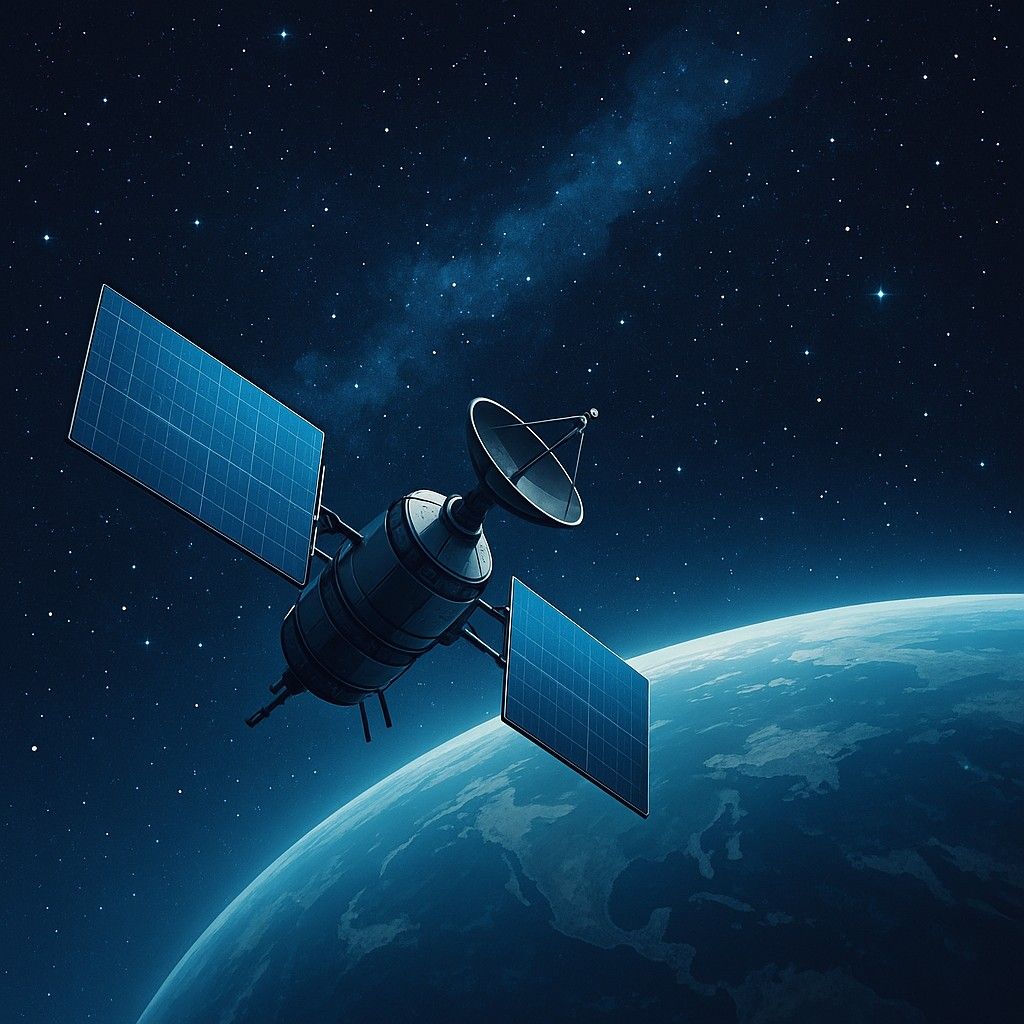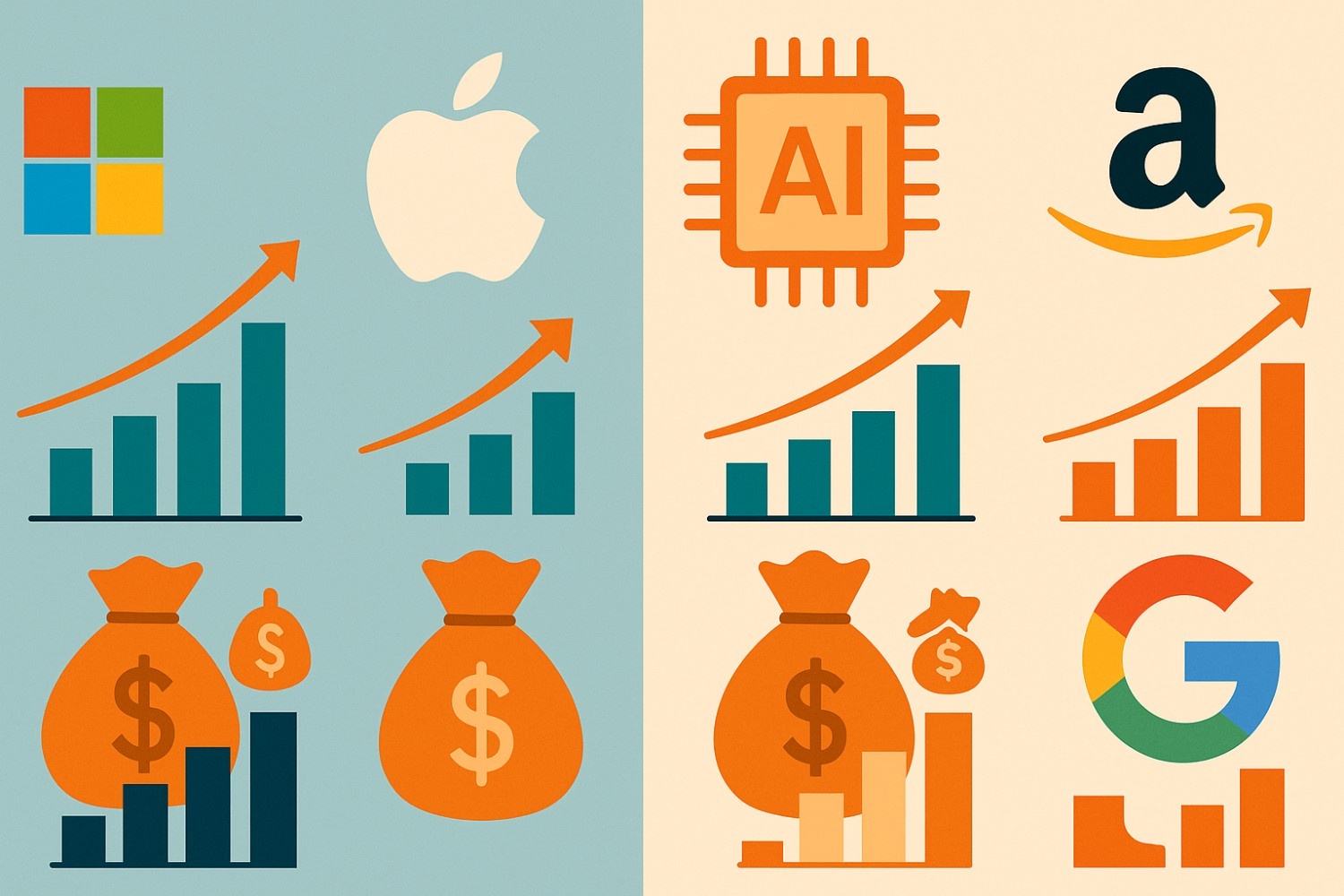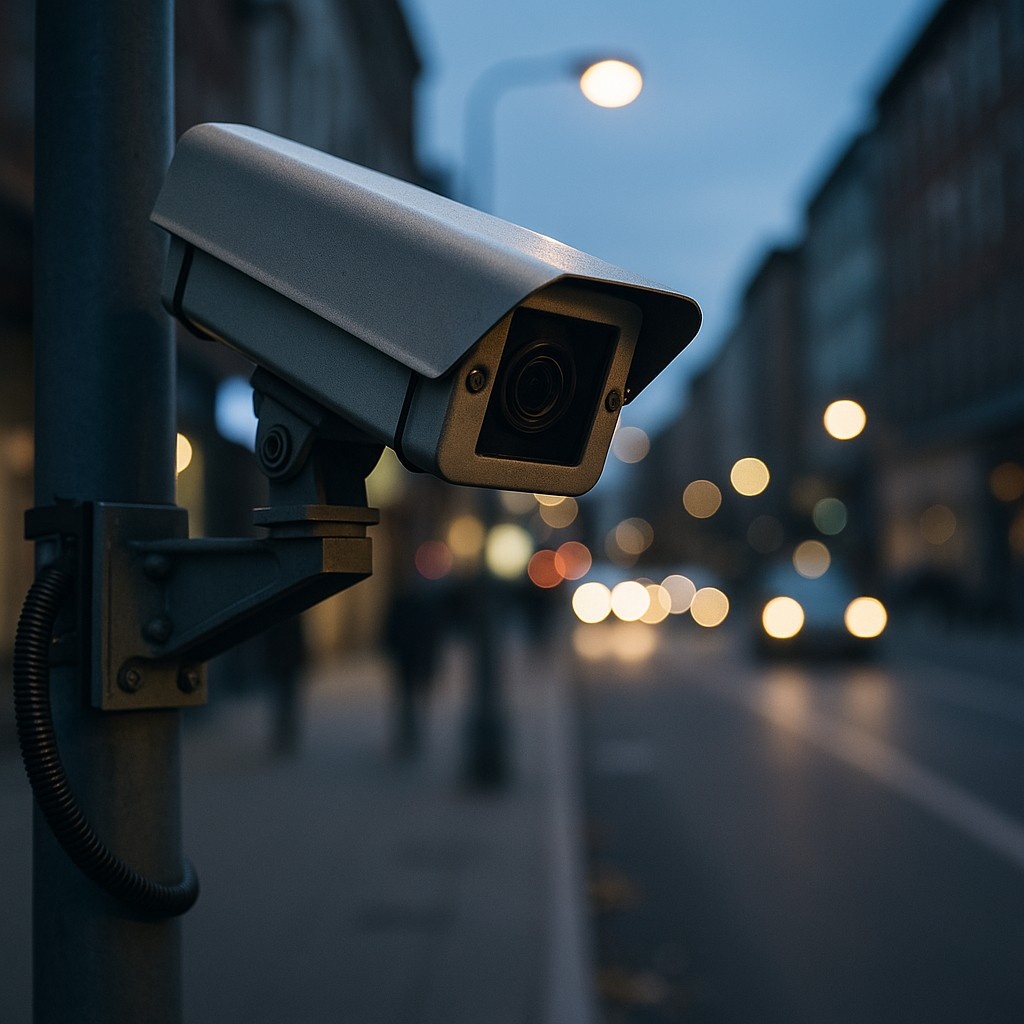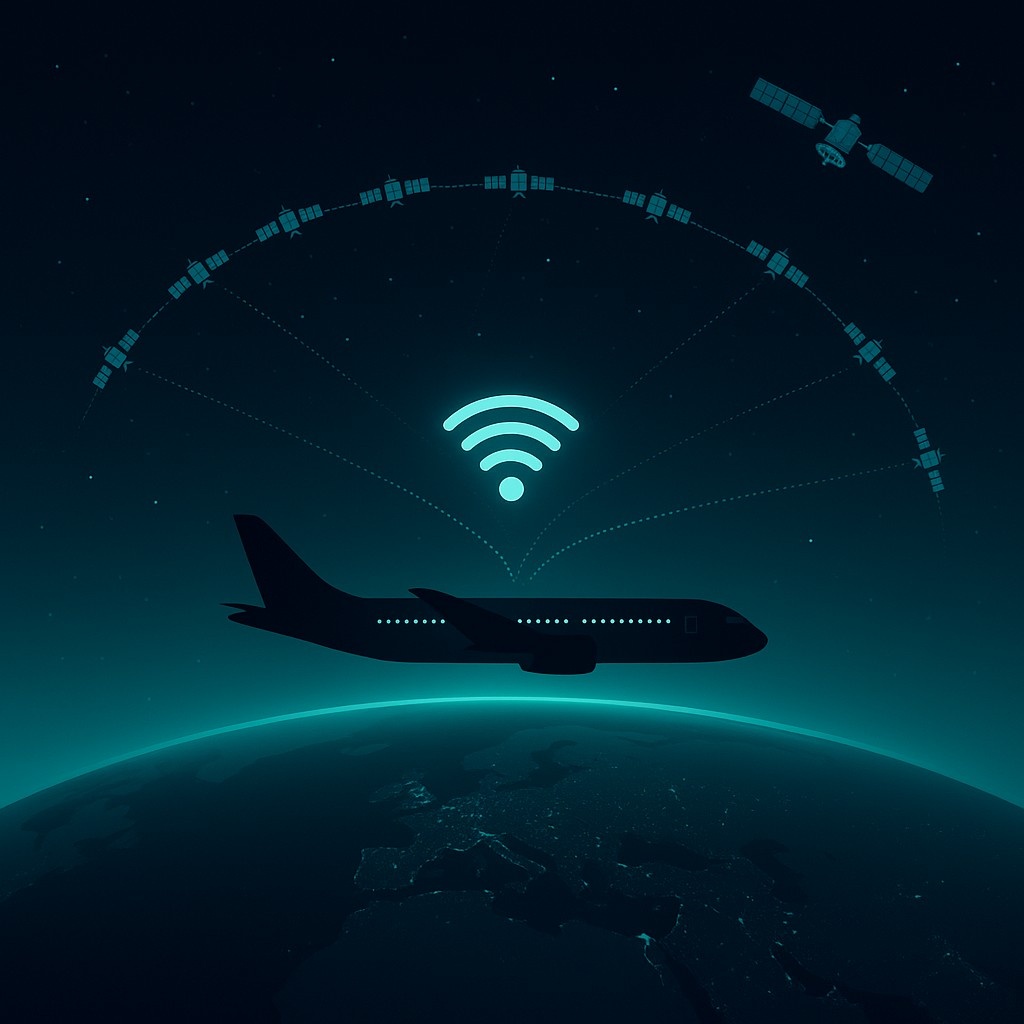The New Space Race: How Satellite Internet and Space Innovation Are Reshaping the 2020s
Space has never been busier — or more competitive. Fifty years after the first Space Race, a new one is unfolding high above our heads. But this time, it’s not just governments racing to plant flags on the Moon. It’s also private companies launching constellations of satellites, fighting to bring global internet coverage, and building rockets powerful enough to reach Mars.
By 2025, space technology is front-page news — led by billionaire founders, national space agencies, and a generation raised on YouTube rocket launches. From Elon Musk’s SpaceX to Jeff Bezos’ Amazon Kuiper, the skies are filling with new technology, big ambitions, and a lot of excitement.
In this article, we’ll break down one of the most important stories in modern space tech: the satellite internet race — primarily between Starlink and Project Kuiper. We’ll also take a broader look at the boom in space exploration, the challenges of crowded orbits, and what it all means for us here on Earth.
Internet from Space: Starlink Takes the Lead, Kuiper Joins the Race
If you gaze at the night sky, you might spot a line of small lights moving across — not UFOs, but Starlink satellites. Since 2019, SpaceX has been deploying thousands of small satellites into low-Earth orbit (LEO) to build an internet system that works anywhere — even in remote mountains or out at sea.
By 2025, SpaceX has launched over 8,000 Starlink satellites, with new batches going up almost every week. The company now provides internet to remote villages, moving vehicles, and even ships, with over 1.5 million subscribers worldwide. It offers special services like Starlink for RVs, ships, and planes, and even a pilot program to connect regular phones in dead zones, thanks to a partnership with T-Mobile.
Now, Amazon’s Project Kuiper is joining the race. After years of planning, it launched its first 27 satellites in April 2025, aiming to eventually deploy 3,236 satellites. Backed by a $10 billion investment, Kuiper is Amazon’s big bet to compete with Starlink for global broadband coverage. The company plans five more launches by the end of 2025.
Jeff Bezos, Amazon’s founder, is confident the market is big enough for multiple winners. Billions of people still lack reliable internet, and Amazon’s cloud infrastructure (AWS) could give Kuiper an edge, offering services that combine connectivity with cloud computing. For example, a mining site in the middle of nowhere could connect directly to the cloud for real-time data processing.
What makes the rivalry even more fascinating is their contrast:
- SpaceX is a vertical powerhouse, building rockets and satellites, launching them cheaply with reusable boosters.
- Amazon is a global logistics and cloud giant, with the resources to scale quickly and integrate services in powerful new ways.
For consumers, the outcome is win-win: more internet choices, better pricing, and wider access.
Bridging the Digital Divide – and Military Uses Too
One of the biggest promises of satellite internet is to connect people who have been left offline. Whether it’s a rural school, a medical clinic in a remote area, or emergency response in disaster zones, satellite constellations like Starlink and Kuiper can make a real difference.
We’ve already seen this in action. Starlink terminals were shipped into war zones and disaster areas, including Ukraine, where they kept civilians and military forces online after traditional infrastructure was knocked out.
Amazon, too, is promoting Kuiper as a tool to help underserved communities, and competition could lead to faster innovation — like cheaper user terminals, faster speeds, and smarter satellite coverage.
But this tech isn’t just for peace and progress. Governments are closely watching satellite constellations for their military potential. Starlink already has a contract with the U.S. Department of Defense, and military planners see these networks as more secure and harder to disrupt than traditional communication satellites.
Expect Amazon to pursue defense contracts too, and keep an eye on China, which has announced its own mega-constellation (called Guowang) and Europe, which is building a sovereign satcom system. Satellite internet is quickly becoming the new 5G — a key component of national power and global influence.
Crowded Skies: The Risks of Satellite Overload
Launching thousands of satellites is revolutionary — but it’s also risky. Space around Earth is getting crowded. Every Starlink or Kuiper satellite may be small on its own, but together they represent a major shift in how we use low-Earth orbit.
The danger of space collisions is no longer theoretical. In 2021, a Russian satellite and a Chinese rocket stage collided, raising alarms. With so many satellites now in orbit, experts say collisions are a matter of “when, not if.”
SpaceX uses automated avoidance systems, and both companies say they’ll deorbit failed satellites responsibly. But regulators are watching closely. The FCC in the U.S. and international bodies like the ITU now require operators to remove satellites within five years after their mission ends.
Astronomers also worry. Satellite glare — especially at dawn and dusk — can ruin telescope images. SpaceX has tried to fix this with sunshades and anti-reflective coatings, and Amazon is expected to follow suit.
The idea of a space traffic control system is now being seriously discussed — like air traffic control, but for orbit.
Still, the potential rewards are massive. Analysts expect satellite broadband to become a multi-billion-dollar market, and many of these satellites can carry extra tools — like climate sensors or Earth observation cameras — providing data on weather, agriculture, deforestation, and more.
Plus, the sheer volume of launches is driving down launch costs across the board, making space more accessible for startups and smaller countries.
Beyond Internet: The Broader Space Tech Boom
The satellite internet race is just one piece of a bigger movement. Space innovation is booming like never before.
Reusable rockets, like SpaceX’s Falcon 9, have already changed how we get to orbit. Now, Starship, SpaceX’s mega-rocket, is in testing. It’s designed to be fully reusable and carry over 100 tons to space — a game-changer for Mars missions, lunar bases, and yes, even more satellite networks.
Despite some explosive test flights, each mission brings progress. Starship’s second integrated flight in late 2023 showed major improvements. SpaceX is even catching and reusing boosters.
Meanwhile, NASA’s Artemis program is bringing humans back to the Moon:
- Artemis I (uncrewed) looped around the Moon in 2022.
- Artemis II, carrying astronauts, is set for 2025.
- Artemis III will aim for a crewed Moon landing — the first since Apollo — using a modified Starship as the lander.
Other countries are joining too:
- China is building its own crewed lunar program and has a new space station in orbit.
- India landed a probe near the Moon’s south pole in 2023 (Chandrayaan-3).
- Countries like UAE, South Korea, and others are launching their own missions.
This new space race feels more like a global tech renaissance than a Cold War standoff. Startups are building mini rockets, space habitats, and satellite hardware, backed by VC firms chasing the next big breakthrough.
What It All Means Here on Earth
All this activity in space is already changing life on Earth:
- More affordable internet: As Starlink and Kuiper scale up, prices are dropping. Even local ISPs are improving to keep up.
- Better data: Satellites are improving weather forecasts, helping monitor forests and farms, and enabling smart sensors anywhere.
- Smarter logistics: From IoT-enabled fishing fleets to off-grid agriculture sensors, satellite internet brings intelligence to the farthest corners.
But with that comes responsibility. Today’s kids may grow up not just learning about climate change, but also about orbital debris, space ethics, and the importance of keeping low-Earth orbit clean and safe.
And let’s not forget the power of inspiration. Young people are flocking to aerospace engineering, following space content creators on TikTok and YouTube, and dreaming big again. Rockets that land upright, nations returning to the Moon, and entrepreneurs building Mars plans — it’s capturing imaginations like the original Moon landing once did.
Final Thoughts
In the first half of the 2020s, space has become one of the most dynamic and dramatic areas of tech. What used to be science fiction — global internet beamed from space — is now a real and competitive industry.
With Amazon’s Kuiper going head-to-head with SpaceX’s Starlink, billions of people may soon get online, shrinking the digital divide. At the same time, space is becoming more crowded, and we’ll need smart rules and global cooperation to keep it safe.
This new space race isn’t a zero-sum race to plant a flag. It’s a multi-player marathon, where competition can drive connection, knowledge, and opportunity for all.
And that makes it one of the most exciting stories in tech today.
















